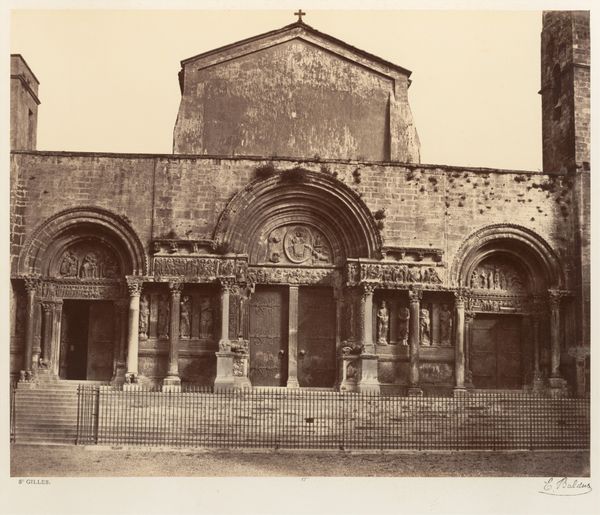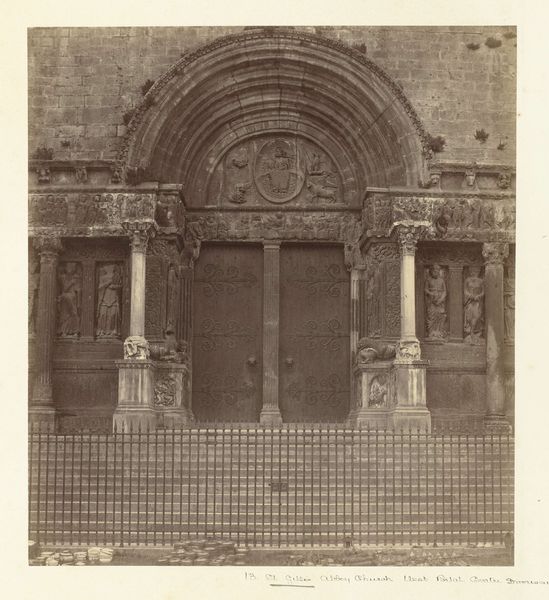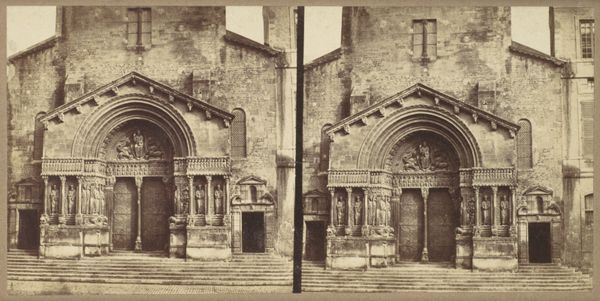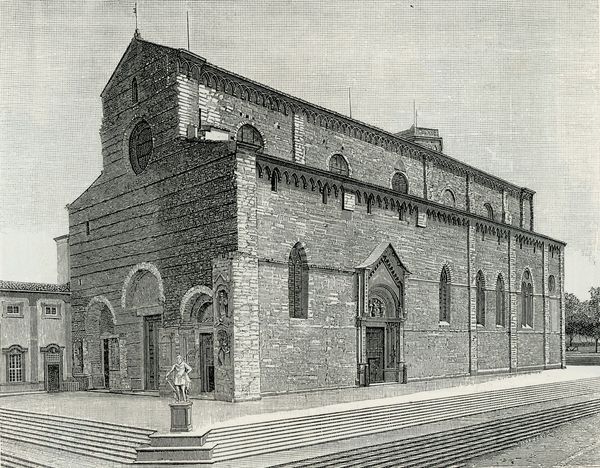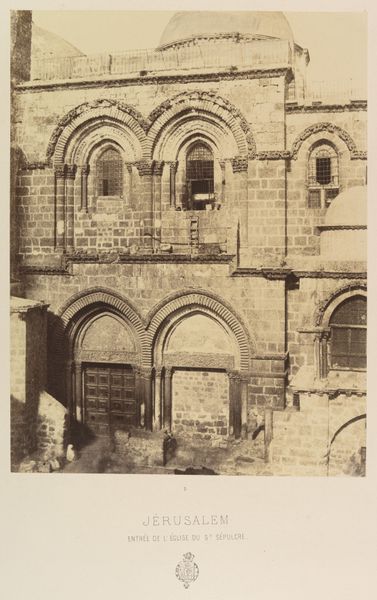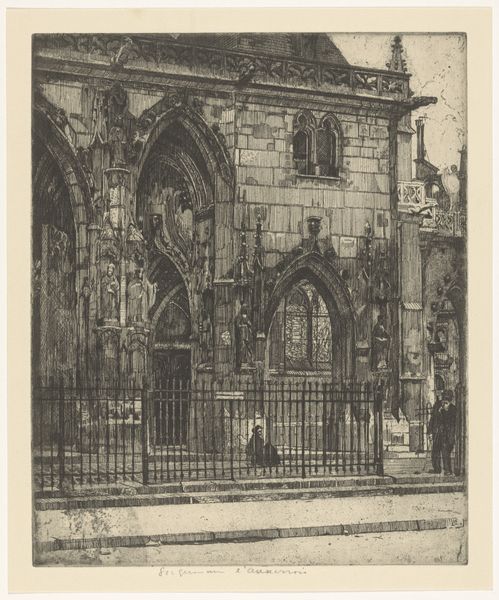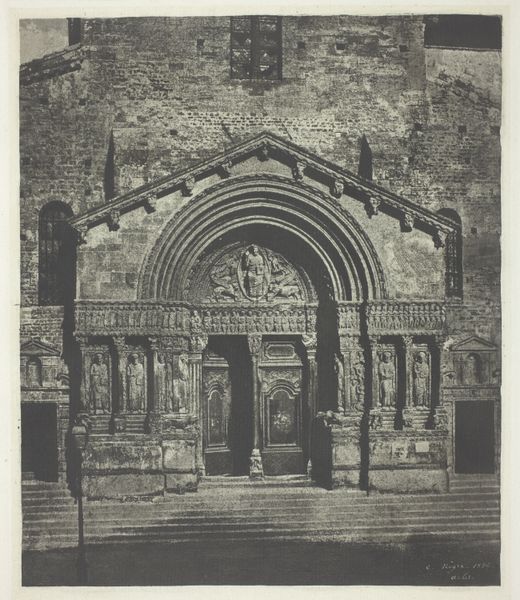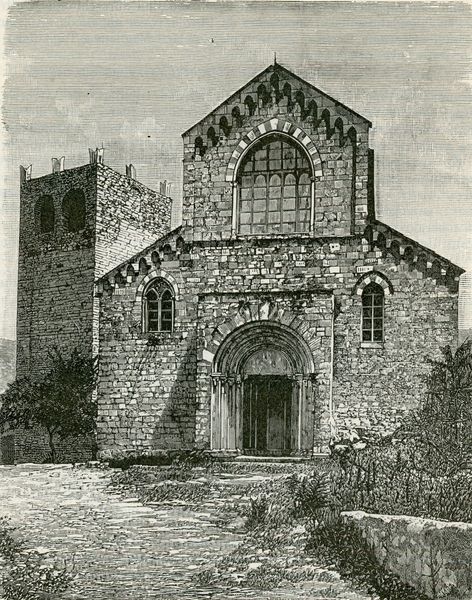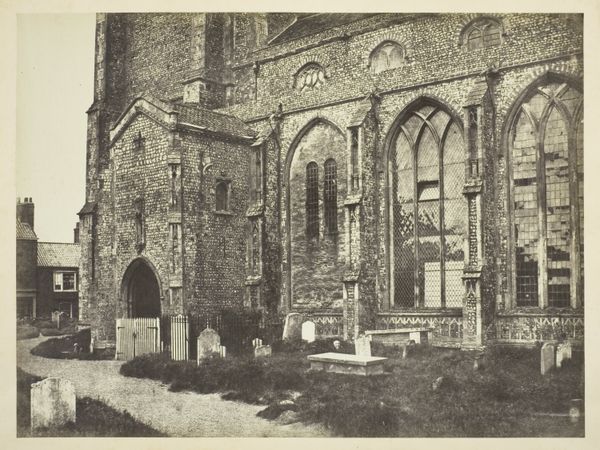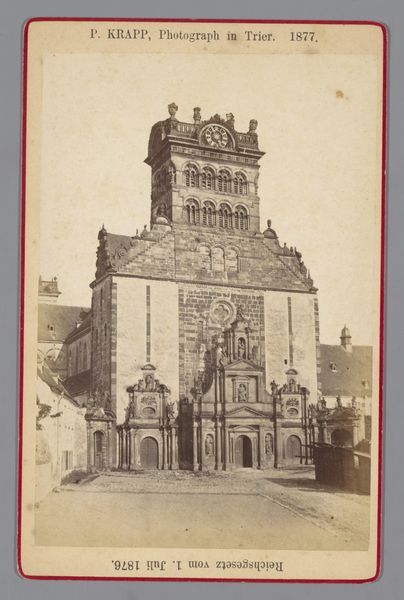
print, photography, gelatin-silver-print, architecture
# print
#
landscape
#
photography
#
romanesque
#
gelatin-silver-print
#
cityscape
#
architecture
Dimensions: Image: 42.6 x 33.8 cm (16 3/4 x 13 5/16 in.) Mount: 60.5 x 46 cm (23 13/16 x 18 1/8 in.)
Copyright: Public Domain
Curator: This is Edouard Baldus's "Arles, St. Trophime," a gelatin silver print created between 1861 and 1862. Its permanent home is now here at The Metropolitan Museum of Art. Editor: My immediate impression is one of formidable weight. The facade of the church seems to emanate not only stone, but the very weight of history pressing down. Curator: Precisely. The beauty, to my eye, resides in the contrast of geometrical forms. Notice the crisp rectangular lines against the semi-circular Romanesque arch framing the entrance. And, of course, the way the light defines the solidity of the structure. Editor: But what kind of labour went into that stone? How were the materials transported? The visible mortar speaks volumes about the individual efforts, and also the immense communal investment required for such a project. It's almost brutal in its massiveness. Curator: That’s an interesting reading, but for me, the image's brutal aspect stems from its rigorous composition. See how the perspective leads the eye upwards, creating an impression of imposing monumentality. And note Baldus’ careful staging to ensure every sculpted detail is perfectly illuminated. Editor: But shouldn't we think about the economic conditions? It reminds me that building materials and techniques reflected not only faith but real-world resources and exploitation. I mean, look closely—can we truly appreciate the sculptures on their aesthetic merit without thinking of the quarries they came from? Curator: We can appreciate the careful framing that heightens the solemn atmosphere of the cathedral's facade. By meticulously controlling the light and shadow, Baldus conveys the emotional power inherent in its architecture, the pure idealism represented by its visual order. Editor: I'm more interested in how that order was achieved, and by whose hands! I find myself focusing less on the 'atmosphere' and more on the socioeconomic pressures that forged every individual stone. Curator: Ultimately, it shows how structures reflect societal needs across the centuries. Editor: It forces us to confront the realities, visible and invisible, in the production of culture.
Comments
No comments
Be the first to comment and join the conversation on the ultimate creative platform.
